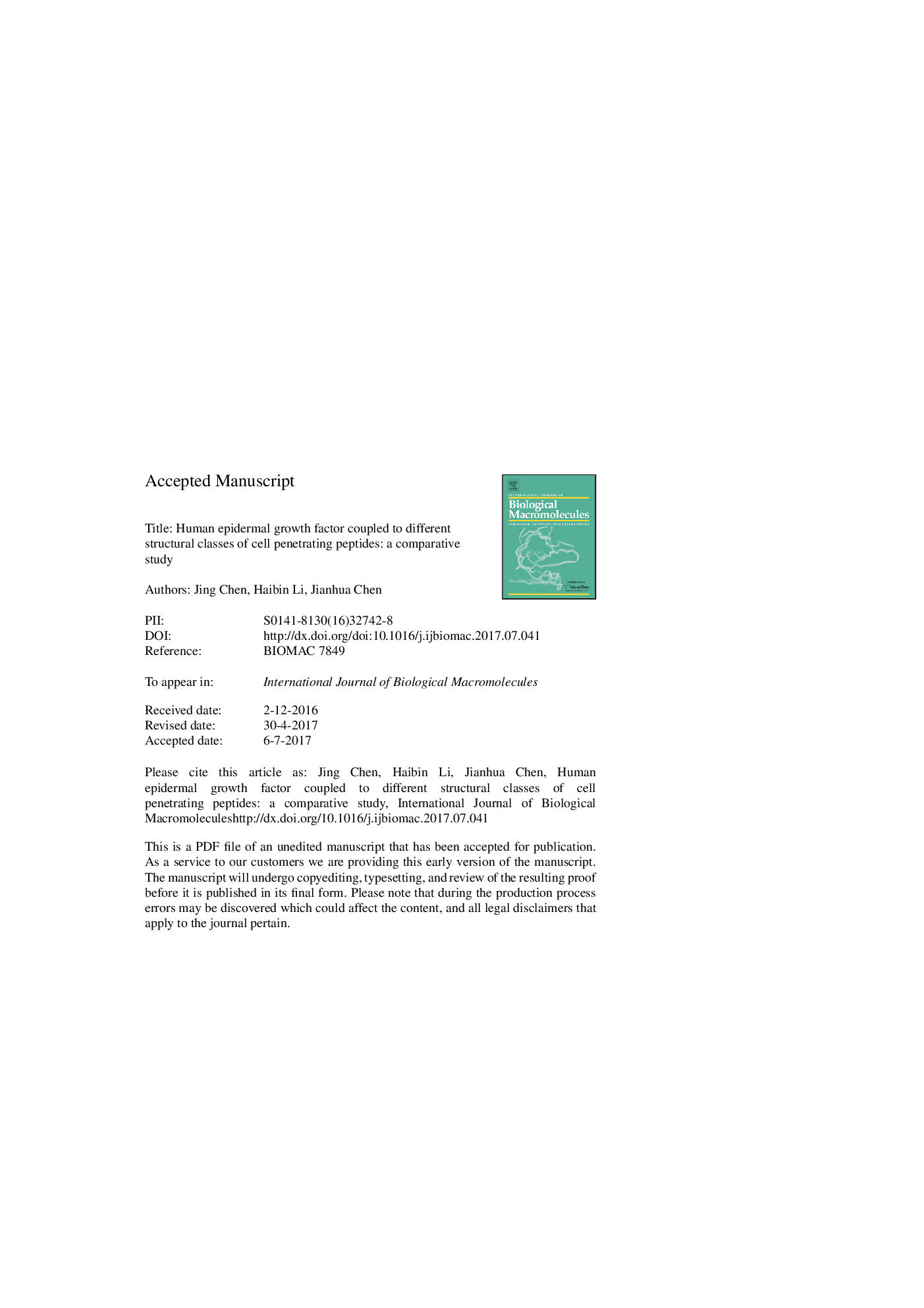| Article ID | Journal | Published Year | Pages | File Type |
|---|---|---|---|---|
| 8329419 | International Journal of Biological Macromolecules | 2017 | 35 Pages |
Abstract
Human epidermal growth factor (hEGF) plays important roles in wound healing. Due to large molecular weight and hydrophilic nature, cellular uptake and skin permeation of hEGF are very poor, significantly limiting its efficacy. By using recombinant technology, four structural classes of cell penetrating peptides (CPPs) were fused at the C-terminus of hEGF, expressed and purified into homogeneity. Comparative studies were conducted to evaluate their activity, cytotoxicity, cellular uptake and skin permeation. Cell viability assay and in vitro scratch wound-healing assay showed that all four fusion proteins had similar activities with commercial rhEGF. Obvious cytotoxicity was not detected for EGF-TAT, EGF-Pep-1 and EGF-AA3H. However, EGF-MAP was cytotoxic at both moderate and high concentrations. Confocal microscopy indicated that the cellular uptake of the fusion proteins was markedly improved compared with rhEGF, with EGF-TAT and EGF-Pep-1 showing the most abundant presence within cells at incubation concentration of 25 μM. Permeation across the excised mouse skin followed the order of EGF-Pep-1 > EGF-TAT > EGF-AA3H > rhEGF. These findings demonstrated that there were great gaps between the abilities of different structural types of CPPs to deliver EGF across cell membrane and the skin. EGF coupled with a well-chosen CPP will become a more promising pharmaceutical agent than rhEGF.
Related Topics
Life Sciences
Biochemistry, Genetics and Molecular Biology
Biochemistry
Authors
Jing Chen, Haibin Li, Jianhua Chen,
